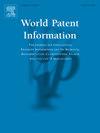A novel approach to measuring the scope of patent claims based on probabilities obtained from (large) language models
IF 2.2
Q2 INFORMATION SCIENCE & LIBRARY SCIENCE
引用次数: 0
Abstract
This work proposes to measure the scope of a patent claim as the reciprocal of self-information contained in this claim. Self-information is calculated based on a probability of occurrence of the claim, where this probability is obtained from a language model. Grounded in information theory, this approach is based on the assumption that an unlikely concept is more informative than a usual concept, insofar as it is more surprising. In turn, the more surprising the information required to define the claim, the narrower its scope. Seven language models are considered, ranging from simplest models (each word or character has an identical probability) to intermediate models (based on average word or character frequencies), to large language models (LLMs) such as GPT2 and davinci-002. Remarkably, when using the simplest language models to compute the probabilities, the scope becomes proportional to the reciprocal of the number of words or characters involved in the claim, a metric already used in previous works. Application is made to multiple series of patent claims directed to distinct inventions, where each series consists of a set of claims having a gradually decreasing scope. The performance of the language models is then assessed through several ad hoc tests. The LLMs outperform models based on word and character frequencies, which themselves outdo the simplest models based on word or character counts. Interestingly, however, the character count appears to be a more reliable indicator than the word count.
基于从(大型)语言模型中获得的概率来衡量专利权利要求范围的新方法
这项工作提出用权利要求中包含的自我信息的倒数来衡量专利权利要求的范围。自信息的计算基于权利要求出现的概率,而这种概率是从语言模型中获得的。这种方法以信息论为基础,假定不可能出现的概念比通常的概念更具信息性,因为它更令人吃惊。反过来,定义索赔所需的信息越令人惊讶,其范围就越窄。我们考虑了七种语言模型,从最简单的模型(每个单词或字符具有相同的概率)到中间模型(基于单词或字符的平均频率),再到大型语言模型(LLMs),如 GPT2 和 davinci-002。值得注意的是,在使用最简单的语言模型计算概率时,范围与权利要求中涉及的单词或字符数量的倒数成正比,而这一指标在以前的工作中已经使用过。该方法适用于针对不同发明的多个系列的专利权利要求,每个系列由一组范围逐渐缩小的权利要求组成。语言模型的性能随后通过几项特别测试进行了评估。LLMs 的表现优于基于单词和字符频率的模型,而后者本身又优于基于单词或字符计数的最简单模型。但有趣的是,字符数似乎是比字数更可靠的指标。
本文章由计算机程序翻译,如有差异,请以英文原文为准。
求助全文
约1分钟内获得全文
求助全文
来源期刊

World Patent Information
INFORMATION SCIENCE & LIBRARY SCIENCE-
CiteScore
3.50
自引率
18.50%
发文量
40
期刊介绍:
The aim of World Patent Information is to provide a worldwide forum for the exchange of information between people working professionally in the field of Industrial Property information and documentation and to promote the widest possible use of the associated literature. Regular features include: papers concerned with all aspects of Industrial Property information and documentation; new regulations pertinent to Industrial Property information and documentation; short reports on relevant meetings and conferences; bibliographies, together with book and literature reviews.
 求助内容:
求助内容: 应助结果提醒方式:
应助结果提醒方式:


